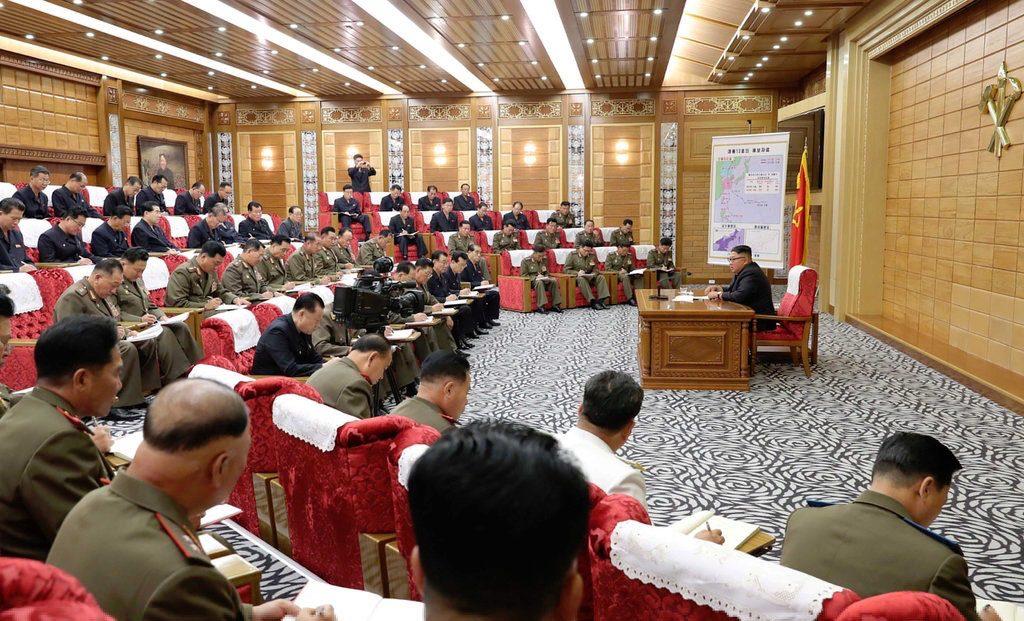During the past year, North Korea has consistently made efforts to peacefully negotiate with the US and South Korea, engaging in a series of talks that first took place in Singapore, Pyongyang, Hanoi, and finally, an impromptu summit at the DMZ in June. It seemed as though the Kim regime was beginning to warm up to the idea of gradual denuclearization and peaceful relations after years of hostility in the Korean peninsula. Unfortunately, such progress was hindered by the recent series of missile tests conducted by the North Korean government. Beginning in late July, North Korea tested a number of ballistic missiles along with other projectile weapons off the east coast of the peninsula.
“North Korea’s recent actions caught me by surprise,” said Angela Lee (12), Government and Politics student. “I thought that tensions between North Korea and South Korea were beginning to simmer down after the DMZ summit, but now it seems as though they have returned, maybe even intensified. These events only confirm the unpredictable nature of the North Korean regime and suggest that the US and South Korea can never truly expect it to behave consistently.”
Experts have been preoccupied with identifying the types of missiles launched by the North Korean government and how dangerous these weapons might be. According to the New York Times, North Korean leader Kim Jong-un declared the two missiles launched in mid-August as the start of the launching of “another new weapon system” in a celebratory statement. Regardless of whether or not the North actually plans to create this new weapon system, all of the weapons tested thus far have violated the United Nations resolutions. Of the weapons, a short-range ballistic missile tested in July seems to be under closer scrutiny from experts because it has never been tested before by North Korea. The development of this new technology demonstrates that the government is continuing to expand upon its already considerable arsenal of weapons.
“I do not think these missile tests demonstrate any tangible, realistic danger from North Korea,” said Michael Silber, Asian Studies teacher. “That being said, there still is considerable pressure inside North Korea that doesn’t exist in the US or South Korea: pressure for Kim Jong Un to continue to make these demonstrations of strength in the face of what is perceived in North Korea as joint South Korea-US aggression. As a result, I think these missile launches are simply part of a pattern, a continuation of the many tests we have seen in the past and not particularly significant.”
Naturally, the international community has been quick to respond to these recent developments. US President Donald Trump was quick to dismiss the series of missile tests as minor threats, as none of these tests utilized nuclear explosive weapons or long-range missiles. Trump’s response has drawn criticism from experts such as Daniel Russel, former Assistant Secretary of State for East Asian and Pacific Affairs, who disapproved Trump’s willingness to overlook the dangers of North Korea’s missile tests. Such a reaction also sets a precedent for North Korea to continue these experiments according to Russel. On the other hand, China, concerned by the proximity of these short-range missile tests, urged the US to resume negotiations with North Korea in order to force Pyongyang to halt testing. The difference in the Chinese government’s response and the US government’s response has emerged due to the distance of North Korean missiles, which are short-range and incapable of reaching mainland US. However, these missiles definitely have the ability to strike North Korea’s closest neighbors: South Korea, Japan, and China.
“President Trump’s reaction to these missile tests is troubling,” said Rachel Lee (10), AP US History student. “It is the duty of the US to condemn any dangerous activity committed by the Kim regime, no matter how small, in order to help maintain peace on the Korean peninsula. However, if Trump and his administration continue to allow North Korea to test its weapons without issuing a clear threat, North Korea’s government might believe that they can get away with even more weapons tests. There is a very slippery slope that comes with ignoring the dangerous implications of Pyongyang’s recent tests.”

